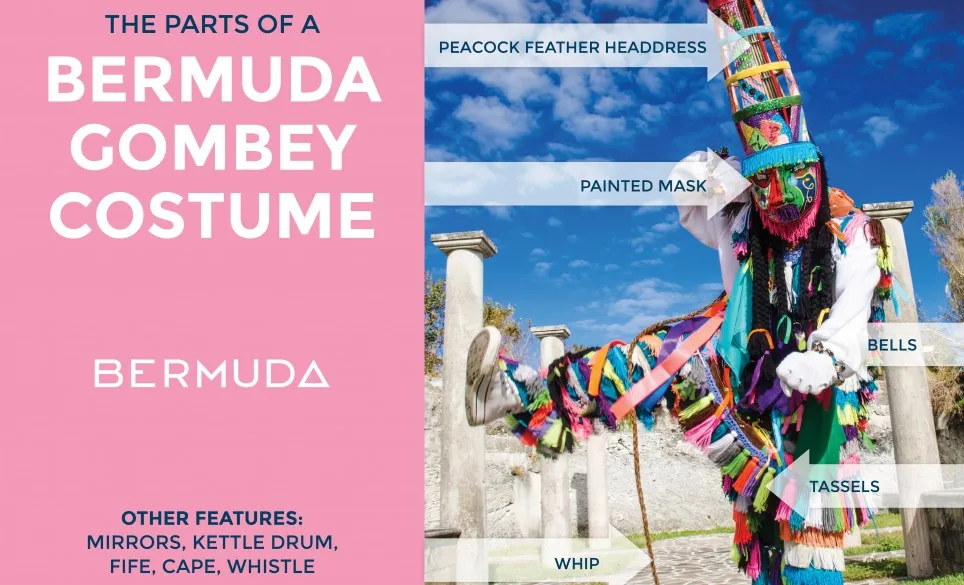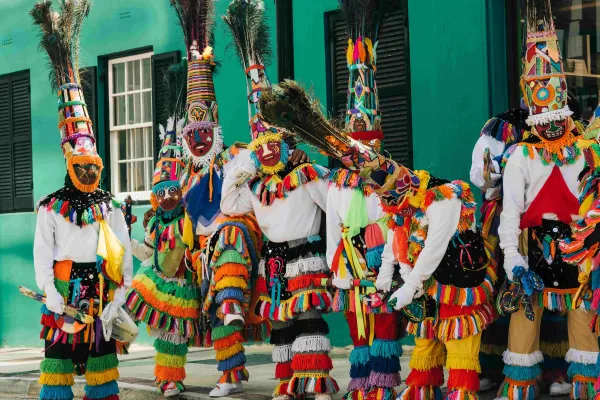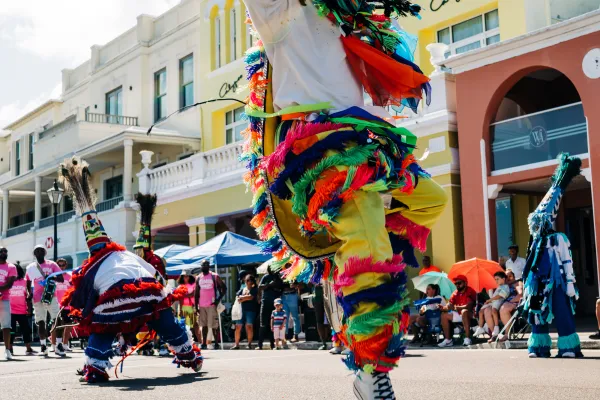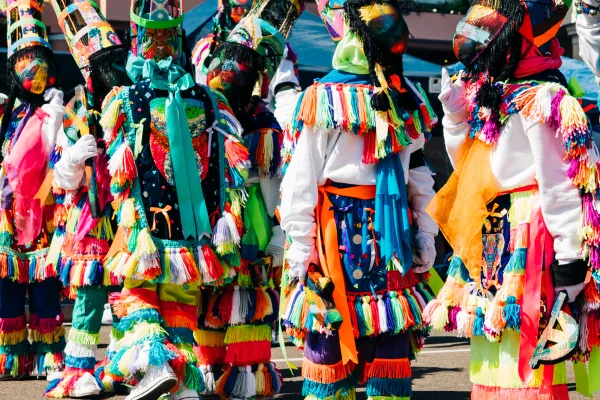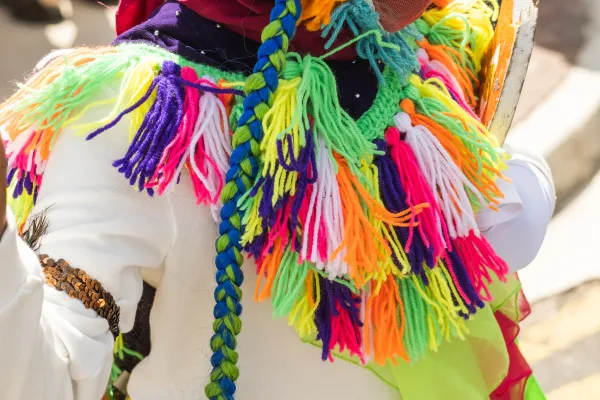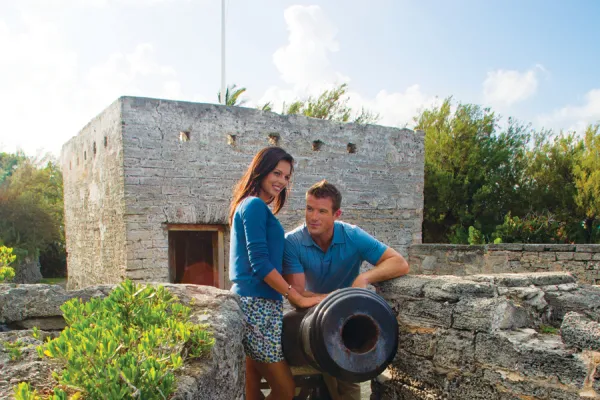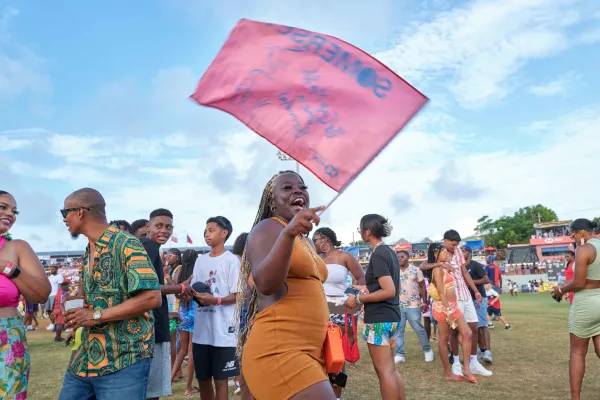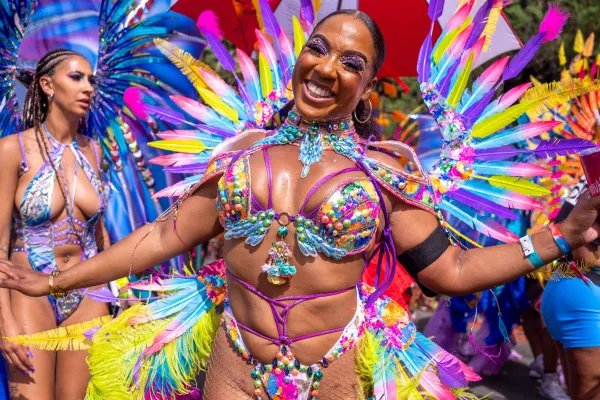HEADDRESSES
Those towering headdresses that add a few feet to each Gombey dancer’s height are usually topped with peacock feathers (symbolizing pride and strength) and adorned with glitter. The stems are often dyed a variety of bright colours.
WHIPS
You can tell who the Captain of the troupe is by looking for the Gombey with the whip. Don’t worry, it’s just a symbol of his leadership of the troupe – though he may give it an impressive whirl as the Gombeys get down.
CAPES
The Captain also wears the longest velvet cape, usually black, but sometimes red, purple, green or blue. Capes are adorned with meaningful embroidery and embellishments, often relating to Bermuda’s root cultures’ folklore, customized for each dancer.
Good to know: Besides the Captain, keep an eye out for other Gombey "characters": The Wild Indian carries a bow and arrow and leads the group down the roads; the Chiefs carry a large tomahawk or shield and helps with the teaching; and the Warriors are usually younger children who carry small hatchets.
PERCUSSION
The word “Gombey” comes from an African word meaning “rhythm,” and rhythm is indeed very important. The infectious beat is provided by various percussion instruments, including a snare drum and goatskin bass drum. You'll also hear the high sounds of a fife adding melody to the proceedings.
